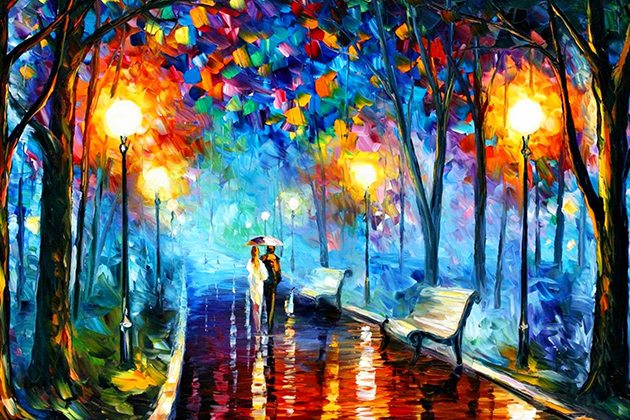The Seeds of Creation: Inspiration and Concept
Before a brushstroke is applied or a chisel meets stone, a work of art begins as a seed of an idea in the artist’s mind. This initial spark of inspiration can come from anywhere – a fleeting moment of beauty, a poignant memory, a social issue, or even a purely abstract concept. The artist’s vision, at this stage, is often a hazy collection of feelings and images, a nascent narrative waiting to be shaped and defined. It’s a deeply personal process, a journey into the artist’s inner world, where emotions and experiences converge to form the foundation of the artwork.
Translating Vision into Form: Medium and Technique
Once the initial concept takes shape, the artist must choose a medium – paint, sculpture, photography, digital art, or any number of other possibilities. The chosen medium directly influences how the vision is expressed. A delicate watercolor painting conveys a different feeling than a bold oil on canvas, just as a meticulously carved sculpture speaks differently than a roughly hewn one. The artist’s mastery of technique is also crucial. Skillful application of the chosen medium allows the artist to refine their vision, adding layers of complexity and nuance to the final piece. This technical proficiency, coupled with the artist’s unique style, allows their vision to become tangible.

Symbolism and Meaning: Unveiling Deeper Layers
Many artworks go beyond their superficial appearance, carrying symbolic weight and deeper meaning. The artist might employ symbolism consciously, embedding hidden messages or allusions within the work, or the meaning might emerge organically from the creative process. Understanding the artist’s intent is essential to fully appreciating the artwork. This involves considering the historical context, the artist’s biography, and the broader cultural and social influences that might have shaped their vision. Analyzing the use of color, composition, and form can often unlock deeper layers of meaning concealed within the artwork.
The Role of the Viewer: Interpretation and Experience
While the artist’s vision is the driving force behind a work of art, the viewer’s interpretation plays an equally significant role. No two individuals experience an artwork in exactly the same way. Personal experiences, cultural background, and emotional state all influence how a viewer responds to the art. The artwork becomes a bridge between the artist’s inner world and the viewer’s own, sparking dialogues, evoking emotions, and prompting reflection. The beauty of art lies partially in its ambiguity; it allows for multiple interpretations, making each encounter a unique experience.
Breaking the Mold: Innovation and Artistic Expression
Great art often challenges conventions and pushes creative boundaries. Artists with a truly unique vision don’t just replicate existing styles; they forge new paths, experimenting with techniques and exploring unconventional themes. This innovation may involve a radical departure from established norms or a subtle evolution of existing forms. Such artistic expression is a testament to the power of human creativity and its ability to transcend limitations. It’s in these moments of artistic rebellion that art truly evolves and progresses.
The Legacy of Vision: Art’s Enduring Impact
The enduring power of art lies in its ability to connect generations. An artist’s vision, once captured on canvas, in stone, or in pixels, can continue to resonate with viewers long after the artist is gone. The artwork becomes a testament to their creativity, their struggles, their triumphs, and their unique perspective on the world. It enters into the collective consciousness, shaping cultural landscapes, sparking conversations, and influencing future generations of artists. Through their art, artists leave an indelible mark on history, ensuring their vision lives on long after their time.
The Emotional Landscape: Feeling and Form
Art is inherently emotional. Whether the artist intends to evoke joy, sorrow, anger, or contemplation, the artwork acts as a conduit for these feelings. The way the artist utilizes color, line, texture, and composition directly impacts the emotional response of the viewer. A vibrant palette might convey excitement, while muted tones might evoke a sense of melancholy. The artist’s skill in manipulating these elements creates a powerful emotional landscape within the artwork, inviting the viewer to participate in a shared experience. Please click here to learn about fine arts.
